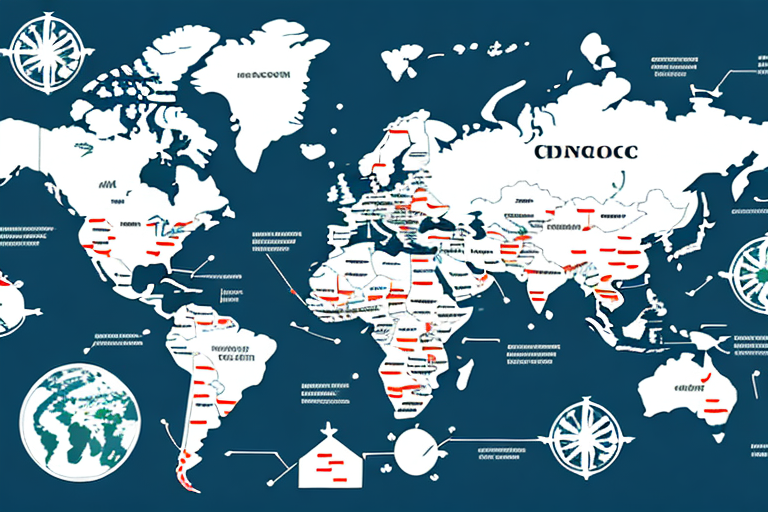Sanctions compliance is a critical aspect of any organization operating in today’s global business environment. With increasing regulations and scrutiny, it is essential for businesses to have a comprehensive understanding of the basics of sanctions compliance. This article aims to provide an exhaustive guide to compliance sanctions mapping, covering key terms, best practices, challenges, strategies, and emerging trends. By the end of this article, readers will have a solid foundation in sanctions compliance, enabling them to navigate the complex world of global regulations with confidence.
Understanding the Basics of Sanctions Compliance
Sanctions compliance refers to the process of ensuring adherence to the legal and regulatory requirements imposed by governments and international bodies to restrict or prohibit certain activities, trade, or transactions with specific countries, individuals, or entities. These sanctions are typically imposed to promote national security, counter terrorism, prevent human rights abuses, or deter illicit activities such as money laundering and corruption.
To effectively comply with sanctions, organizations need to understand the legal framework underpinning these measures, including the laws and regulations at national, regional, and international levels. This includes familiarizing themselves with key sanctioning bodies, such as the United Nations, the European Union, the Office of Foreign Assets Control (OFAC) in the United States, and other national regulatory authorities.
Furthermore, organizations must establish robust internal controls and procedures, including screening processes, due diligence measures, and ongoing monitoring, to ensure compliance with sanctions policies and regulations. Failure to comply with these measures can result in serious legal and reputational consequences, including fines, penalties, loss of business opportunities, and damage to the organization’s brand and reputation.
It is important for organizations to regularly update their knowledge and stay informed about changes in sanctions policies and regulations. Sanctions can be dynamic and subject to frequent updates, additions, or removals. Therefore, organizations should establish mechanisms to stay updated on the latest developments, such as subscribing to relevant government or regulatory authority newsletters, attending industry conferences or seminars, and engaging with legal and compliance professionals who specialize in sanctions compliance.
The Importance of Compliance in Sanctions Mapping
In the realm of sanctions compliance, mapping is a crucial process that involves identifying, categorizing, and mapping out potential risks and compliance obligations across the organization’s operations, business partners, and supply chains. By conducting thorough sanctions mapping, organizations can effectively identify and mitigate potential risks, ensure compliance with legal requirements, and safeguard their operations and reputation.
Compliance in sanctions mapping is essential for several reasons. Firstly, it allows organizations to adhere to their legal and regulatory obligations by ensuring that they do not engage in business activities with sanctioned individuals, entities, or countries. By maintaining a strong culture of compliance, organizations can demonstrate a commitment to ethical business practices and avoid legal and reputational risks.
Secondly, compliance in sanctions mapping enables organizations to manage operational risks associated with engaging in prohibited activities. By identifying high-risk transactions and parties, organizations can implement appropriate controls and due diligence processes to prevent unintended violations of sanctions regulations.
Moreover, compliance in sanctions mapping promotes a level playing field in the global business environment by ensuring that competition is fair and equitable. By adhering to sanctions regulations, organizations can contribute to the overall stability and integrity of the global financial system.
Furthermore, compliance in sanctions mapping helps organizations build trust and credibility with their stakeholders. By demonstrating a commitment to compliance, organizations can enhance their relationships with customers, investors, and business partners. This can lead to increased business opportunities, improved financial performance, and a positive brand image.
Lastly, compliance in sanctions mapping plays a crucial role in risk management. By identifying and addressing potential risks, organizations can proactively mitigate the impact of sanctions violations. This can help minimize financial losses, legal penalties, and damage to the organization’s reputation. Additionally, effective sanctions mapping can enable organizations to respond quickly and effectively to changes in sanctions regulations, ensuring ongoing compliance and minimizing disruption to business operations.
Key Terms and Definitions in Sanctions Glossary
Before delving further into sanctions compliance mapping, it is important to familiarize ourselves with key terms and definitions commonly used in the sanctions glossary. Understanding these terms will help organizations navigate the complex world of sanctions mapping more effectively. Some key terms include:
– Sanctions: Restrictions or prohibitions imposed by governments or international bodies to influence the behavior of individuals, entities, or countries.- Designated Person/List: Individuals, companies, or entities specifically targeted by sanctions.- Embargo: A complete ban on trade or other commercial activity with a specific country or region.- Dual-Use Goods/Technology: Goods, software, or technology that can have both civilian and military applications.- Money Laundering: The process of concealing the origins of illegally obtained money to make it appear legitimate.- Know Your Customer (KYC): The due diligence process that organizations undertake to verify the identity and suitability of their customers before entering into a business relationship.- Politically Exposed Person (PEP): An individual who holds a prominent public position or has close associations with individuals in public positions, making them vulnerable to corruption.- Risk Assessment: The process of evaluating and quantifying potential risks associated with a business activity or relationship.
These are just a few examples of the many terms and definitions that can be found in the sanctions glossary. Familiarizing oneself with these terms will provide a solid foundation for navigating the complexities of sanctions compliance mapping.
It is also important to understand the concept of “secondary sanctions.” Secondary sanctions are measures imposed by one country on individuals, entities, or countries that are not directly subject to its jurisdiction. These measures are intended to deter or punish third parties, such as foreign companies or financial institutions, that engage in certain activities with the sanctioned individuals, entities, or countries. Understanding secondary sanctions is crucial for organizations operating in a global context, as they can have significant implications for international business transactions and relationships.


